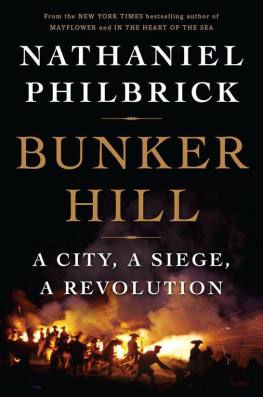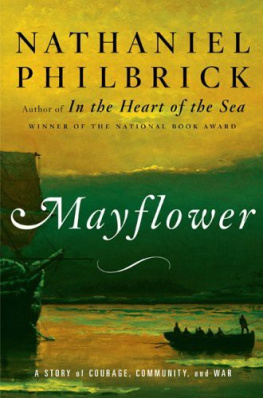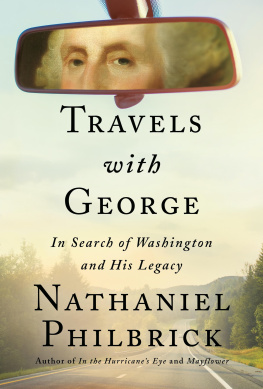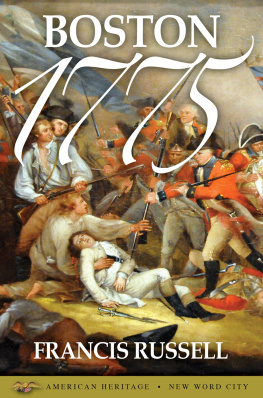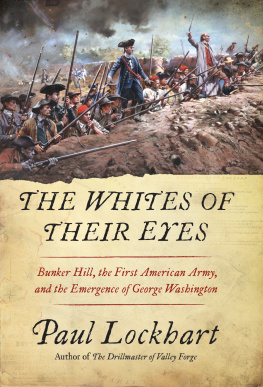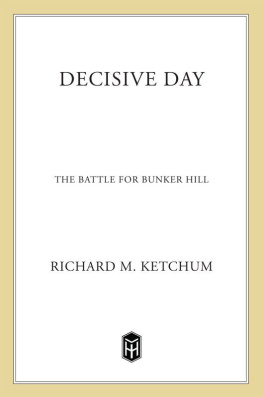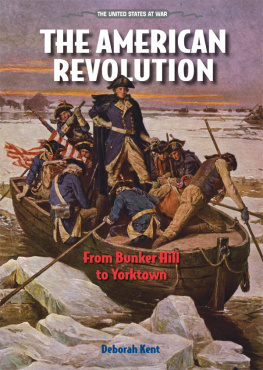ALSO BY NATHANIEL PHILBRICK
The Passionate Sailor
Away Off Shore: Nantucket Island and Its People, 16021890
Abrams Eyes: The Native American Legacy of Nantucket Island
Second Wind: A Sunfish Sailors Odyssey
In the Heart of the Sea: The Tragedy of the Whaleship Essex
Sea of Glory: Americas Voyage of Discovery; The U.S. Exploring Expedition, 18381842
Mayflower: A Story of Courage, Community, and War
The Last Stand: Custer, Sitting Bull, and the Battle of Little Bighorn
Why Read Moby-Dick?
VIKING
Published by the Penguin Group
Penguin Group (USA) Inc., 375 Hudson Street,
New York, New York 10014, USA
USA | Canada | UK | Ireland | Australia | New Zealand | India | South Africa | China
Penguin Books Ltd, Registered Offices: 80 Strand, London WC2R 0RL, England
For more information about the Penguin Group visit penguin.com
Copyright Nathaniel Philbrick, 2013
All rights reserved. No part of this book may be reproduced, scanned, or distributed in any printed or electronic form without permission. Please do not participate in or encourage piracy of copyrighted materials in violation of the authors rights. Purchase only authorized editions.
Illustration credits appear .
Maps by Jeffrey L. Ward
Art : View of Long Wharf and Part of the Harbor of Boston in New England, America (detail). Courtesy of the Bostonian Society, Object Collection
LIBRARY OF CONGRESS CATALOGING IN PUBLICATION DATA
Philbrick, Nathaniel.
Bunker Hill : a city, a siege, a revolution / Nathaniel Philbrick.
pages cm
Includes bibliographical references and index.
ISBN 978-1-101-62270-4
1. Bunker Hill, Battle of, Boston, Mass., 1775. 2. Boston (Mass.)HistoryRevolution, 17751783. I. Title.
E241.B9P48 2013
973.3312dc23
2013001534
To my mother, Marianne Dennis Philbrick
Contents
Boston has been like the vision of Moses: a bush burning but not consumed.
the Reverend Samuel Cooper, April 7, 1776
Preface: The Decisive Day
O n a hot, almost windless afternoon in June, a seven-year-old boy stood beside his mother and looked out across the green islands of Boston Harbor. To the northwest, sheets of fire and smoke rose from the base of a distant hill. Even though the fighting was at least ten miles away, the concussion of the great guns burst like bubbles across his tear-streaked face.
At that moment, John Adams, the boys father, was more than three hundred miles to the south at the Continental Congress in Philadelphia. Years later, the elder Adams claimed that the American Revolution had started not with the Boston Massacre, or the Tea Party, or the skirmishes at Lexington and Concord and all the rest, but had been effected before the war commenced... in the minds and hearts of the people. For his son, however, the decisive day (a phrase used by the boys mother, Abigail) was June 17, 1775.
Seventy-one years after that day, in the jittery script of an old man, John Quincy Adams described the terrifying afternoon when he and his mother watched the battle from a hill beside their home in Braintree: I saw with my own eyes those fires, and heard Britannias thunders in the Battle of Bunkers hill and witnessed the tears of my mother and mingled with them my own. They feared, he recounted, that the British troops might at any moment march out of Boston and butcher them in cold blood or take them as hostages and drag them back into the besieged city. But what he remembered most about the battle was the hopeless sense of sorrow that he and his mother felt when they learned that their family physician, Dr. Joseph Warren, had been killed.
Warren had saved John Quincy Adamss badly fractured forefinger from amputation, and the death of this beloved physician was a terrible blow to a boy whose fathers mounting responsibilities required that he spend months away from home. Even after John Quincy Adams had grown into adulthood and become a public figure, he refused to attend all anniversary celebrations of the Battle of Bunker Hill.
Joseph Warren, just thirty-four at the time of his death, had been much more than a beloved doctor to a seven-year-old boy. Over the course of the two critical months between the outbreak of hostilities at Lexington Green and the Battle of Bunker Hill, he became the most influential patriot leader in the province of Massachusetts. As a member of the Committee of Safety, he had been the man who ordered Paul Revere to alert the countryside that British soldiers were headed to Concord; as president of the Provincial Congress, he had overseen the creation of an army even as he waged a propaganda campaign to convince both the American and British people that Massachusetts was fighting for its survival in a purely defensive war. While his more famous compatriots John Adams, John Hancock, and Samuel Adams were in Philadelphia at the Second Continental Congress, Warren was orchestrating the on-the-ground reality of a revolution.
Warren had only recently emerged from the shadow of his mentor Samuel Adams when he found himself at the head of the revolutionary movement in Massachusetts, but his presence (and absence) were immediately felt. When George Washington assumed command of the provincial army gathered outside Boston just two and a half weeks after the Battle of Bunker Hill, he was forced to contend with the confusion and despair that followed Warrens death. Washingtons ability to gain the confidence of a suspicious, stubborn, and parochial assemblage of New England militiamen marked the advent of a very different kind of leadership. Warren had passionately, often impulsively, tried to control the accelerating cataclysm. Washington would need to master the situation deliberately andabove allfirmly. Thus, the Battle of Bunker Hill is the critical turning point in the story of how a rebellion born in the streets of Boston became a countrywide war for independence.
This is also the story of two British generals. The first, Thomas Gage, was saddled with the impossible task of implementing his governments unnecessarily punitive response to the Boston Tea Party in December 1773. Gage had a scrupulous respect for the law and was therefore ill equipped to subdue a people who were perfectly willing to take that law into their own hands. When fighting broke out at Lexington and Concord, militiamen from across the region descended upon the British stationed at Boston. Armed New Englanders soon cut off the land approaches to Boston. Ironically, the former center of American resistance found itself gripped by an American siege. By the time General William Howe replaced Gage as the British commander in chief, he had determined that New York, not Boston, was where he must resume the fight. It was left to Washington to hasten the departure of Howe and his army.
The evacuation of the British in March 1776 signaled the beginning of an eight-year war that produced a new nation. But it also marked the end of an era that had started back in 1630 with the founding of the Puritan settlement called Boston. This is the story of how a revolution changed that 146-year-old communityof what was lost and what was gained when 150 vessels filled with British soldiers and American loyalists sailed from Boston Harbor for the last time.
Over the more than two centuries since the Revolution, Boston has undergone immense physical change. Most of the citys once-defining hills have been erased from the landscape while the marshes and mudflats that surrounded Boston have been filled in to eliminate almost all traces of the original waterfront. But hints of the vanished town remain. Several meetinghouses and churches from the colonial era are still standing, along with a smattering of seventeenth- and eighteenth-century houses. Looking southeast from the balcony of the Old State House, you can see how the spine of what was once called King Street connects this historic seat of government, originally known as the Town House, to Long Wharf, an equally historic commercial center that still reaches out into the harbor.

